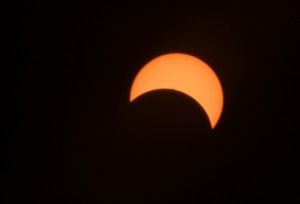The Entertainment Capital of the World, the Sports Capital of the World and now … the Space Capital of the World?
That’s the vision of Robert Lauer, CEO of Las Vegas Spaceport. The company received unanimous approval from the Clark County Board of Commissioners in early May to build an airstrip for the future Las Vegas Executive Airport, which Lauer says will be the beginnings of a spaceport.
According to a statement from Clark County, the approval is only for an airstrip at this time, conditional upon approval of the Federal Aviation Administration. Expansion or use of the airstrip for any other purpose would require subsequent applications to the county and additional FAA approvals.
On 240 acres along Highway 160 approximately 50 miles away from Las Vegas, nestled in the shadow of Mount Charleston and Red Rock National Conservation Area, Lauer expects the $320 million Las Vegas Spaceport to include a range of services including civilian space flight assimilation training, 40 commercial hangars, a STEM college with advanced flight simulators, a hotel, passenger terminal, rooftop observation deck and restaurant.
“Part one is going to build public support through tourism, because it exposes the average person to what the industry is building and the opportunities that are provided,” Lauer tells the Weekly.
Tourists would be able to purchase fighter jet rides that simulate “high Gs” and simulate space travel for $6,500, he adds, as well as zero-gravity parabolic flights for $9,000. “The fighter jet rides may be available this summer,” he says, adding that plans include a heliport near the Strip to transport tourists to the spaceport.
Lauer envisions building a “space economy” much like Florida’s right here in Southern Nevada. And he says the secret ingredient to making it work, is a private enterprise like what Elon Musk’s SpaceX has done. In his research of 16 spaceports across the country, he found that the facilities were government-owned, and do not seem very effective in engaging businesses or the public.
“I found that they were all done by government agencies, municipalities, states. … Most of them were just run by local bureaucrats who didn’t have any real relationship to space or the space industry or business or anything, and were not very receptive or supportive of businesses,” says Lauer, who has been a pilot for 30 years.
“I look at Nevada. I look at Vegas. I look at our history with the nuclear test site, with Area 51, with the Nevada Test [and Training] Range, and the people here and our engineers and our deep history of technology [and] I don’t think there’s a better place in the country to build a space economy. … We have built-in tax credits for aerospace companies to come here.”
To sustain a space economy, the spaceport also would provide the needed “human capital.” A post-high school STEM academy, a “private, nonprofit … military academy,” is planned to be on site at the spaceport.
“There’s no [general education]. These kids are going to go through a two-year program where they are going to be focused on aerospace engineering, but also other disciplines like welding. So [they don’t] have to be a rocket scientist to be able to go to our STEM academy,” he says. “We’re going to be working closely with companies to see what they actually need, so we can create a curriculum that fits the needs of our industry.”
Lauer has recruited an expert advisory board for this, including José Hernandez, former NASA astronaut and current regent of the University of California, as well as Ron Kelly, CEO of Las Vegas Flight Academy.
As for actual space travel, Lauer is watching the development of spaceplanes, which are being engineered to go into space, return and repeat. Rockets, at least with the current technology, would be impractical to launch so close to a city, he says.
“There are no vertical launch companies right now, rocket companies that can launch inland, so close to a city like ours. And that’s why I’m pressing the spaceplanes. … Those are the kind of vehicles that could, and I expect would, operate out of our spaceport in three to five years,” he says.
More immediately, Las Vegas Executive Airport is expected to alleviate capacity issues with general (non-commercial, non-military) aviation—including private jets, which landed in Vegas in record numbers for the Formula 1 Las Vegas Grand Prix and the Super Bowl. Lauer estimates the airport would be able to park 150 to 200 jets.
This could help with ground capacity issues at Harry Reid International Airport, he adds—faster than the county’s Ivanpah Valley Airport forthcoming in 2037.
“If we can get approval by the end of summer, after we’re done with the drainage study and other things, we hope to break ground by the end of summer. That means within two years of buying the property, I’m going to have an operational runway and airport essentially,” Lauer says. “The government has been taking 24 years since the land was approved by Bill Clinton to build an international airport out by Primm. And they’re talking another 13 years before they’re ready to even move forward with construction.”
Lauer knows the spaceport won’t happen tomorrow. But the tourism aspects of the enterprise, including air races, could start earlier.
“This is going to be a 10-year program to create this industry. But it’s already emerging,” he says.
Click HERE to subscribe for free to the Weekly Fix, the digital edition of Las Vegas Weekly! Stay up to date with the latest on Las Vegas concerts, shows, restaurants, bars and more, sent directly to your inbox!






